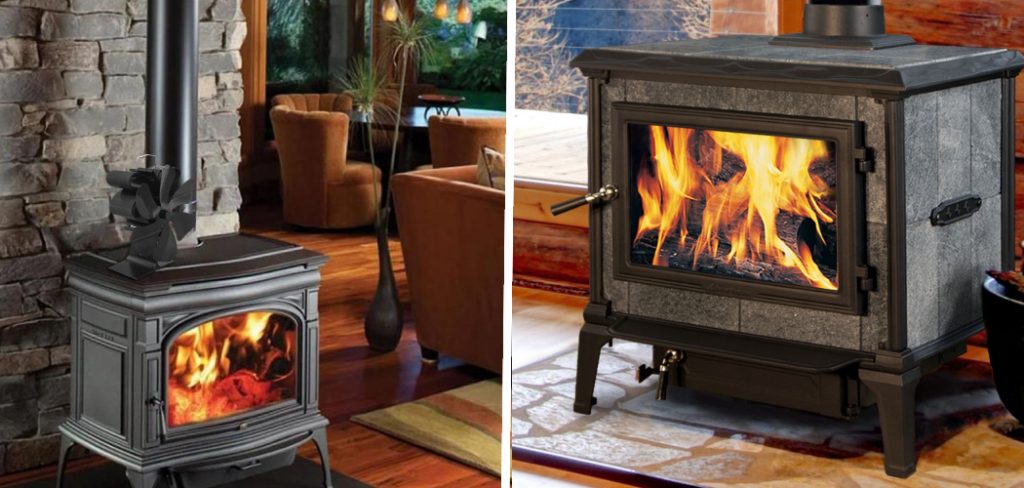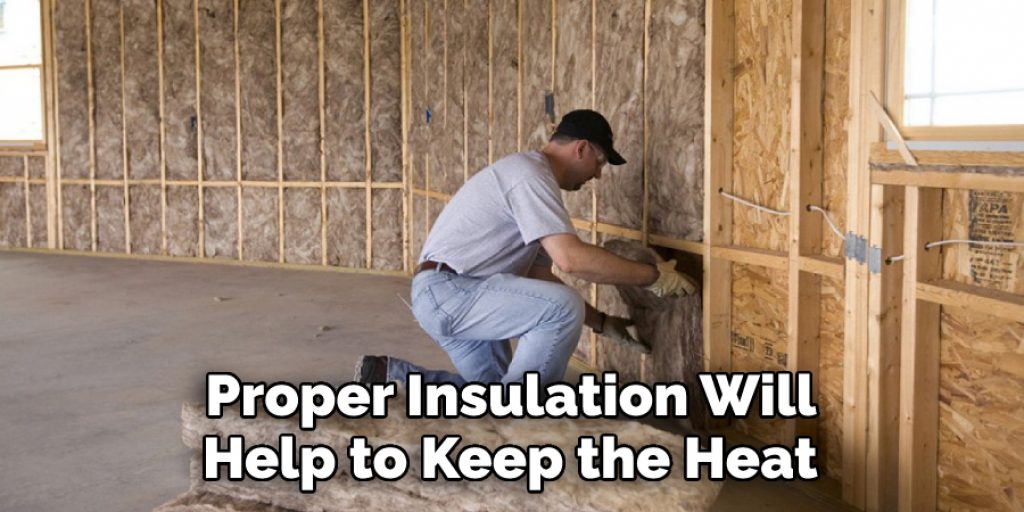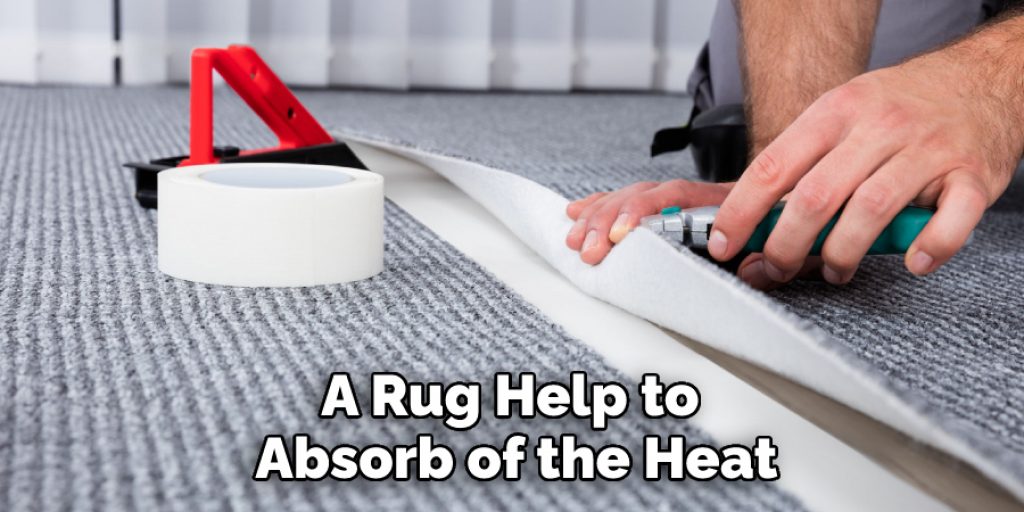How to Circulate Wood Stove Heat
When heating your home with wood, strategically circulating the heat generated by your wood stove is essential to ensuring your living spaces are comfortable. But how do you ensure that heat produced by the wood stove is properly circulated throughout a room or house? In this blog post, we’ll take a look at how to circulate wood stove heat effectively and make sure it reaches all of those cozy corners in your home.

From convection to distributing warmth via radiators, we’ll discuss different strategies you can use to ensure maximum comfort during chilly winter months and benefit from every bit of potential being provided by your reliable and efficient wood-burning appliance. Read on for details!
Should I Put a Fan behind My Wood Stove?
The answer to this question is a definite yes. Placing a fan behind your wood stove can significantly increase the efficiency of your wood-burning system. By circulating heated air throughout the room, you will be able to reduce fuel costs and make sure that everyone in the room stays warm.
When purchasing a fan for your wood stove, it is important to make sure that the fan is rated for the high temperatures of a wood stove. An ideal choice is an oven fan, as it has been designed and tested for use with high-temperature appliances such as stoves and ovens. It should also be noted that you must choose an electric fan over manual fans, which can create sparks if used near open flames or hot surfaces.
For optimal efficiency, it’s best to place the fan on a riser behind your wood stove. This will ensure that air is circulated directly from the source (the firebox) instead of circulating warm air already in the room. If a riser isn’t available, then placing the fan directly on the floor or other flat surface will still provide some benefit.
If you are looking to maximize the amount of heat circulated from your wood stove, then a fan is a great option. Although it may require an initial investment in equipment, the savings that come with using less fuel to keep your home warm can quickly add up over time—making it well worth the cost. With a fan in place, you will be able to keep your home warm while using less fuel and saving money.
10 Methods How to Circulate Wood Stove Heat
1. Use a Blower
A wood stove blower is a small fan that helps circulate the heat from your wood stove. By circulating the heat, a blower will help to heat your home more evenly and efficiently. When choosing a wood stove blower, make sure it is designed to work with your particular model of the stove.

If you need assistance determining the right blower, contact your local wood stove retailer. Though installing a blower is typically simple, a professional should be consulted if you are unsure of how to do so.
2. Place Your Wood Stove in the Middle of Your Home
If possible, try to place your wood stove in the middle of your home. This will help to distribute the heat evenly throughout your home. If you have an open floor plan, it will also help to spread the heat more easily. Keep in mind that your wood stove should always be placed on a non-combustible surface, such as a hearth.
Also, remember to keep combustible materials at least 36 inches away from your wood stove, as this can be a fire hazard. However, if you don’t have an open floor plan, try to place your wood stove against a wall that is furthest away from the windows and doors. This will help trap the heat in your home for longer.
3. Use Reflective Materials
By placing reflective materials around your wood stove, you can help to reflect the heat back into your home. Some good reflective materials include aluminum foil, mirrors, and shiny metal sheets. Position these materials around the wood stove and angle them to reflect the heat back into your home. You can also place them behind the stove to help direct heat away from the wall.
This will help to keep your walls cool and reduce any potential fire hazards. If you have a fan, position it so that it helps to move the heat into your home. The fan should be set on a low speed so that it gently moves the hot air without creating too much of a breeze.
4. Insulate your Home
Proper insulation will help to keep the heat in your home and prevent it from escaping. Make sure to check your insulation regularly and add more if necessary. If your home has drafty windows, consider replacing them with more energy-efficient models. While it may be a costly investment, it will pay off in the long run.

Additionally, you can add door sweeps and weather stripping to help keep your home warm and toasty. Once you’ve taken the necessary steps to properly insulate your home, you can be sure that your wood stove heat is being put to good use.
5. Close off Unused Rooms
If you have rooms in your home that are not being used, close the doors to those rooms. This will help to prevent the heat from escaping into those unused rooms. Additionally, you should ensure there are no drafts coming from windows and doors by sealing any gaps or cracks with caulk.
Furthermore, you may want to consider installing a device such as a magnetic-thermal vent cover that closes off vents in unused rooms to further prevent the heat from escaping. Finally, if you have radiators or other heating elements in the unused rooms, you should turn them off to reduce your overall heating costs.
6. Place a Rug in Front of Your Wood Stove
A rug can help to absorb some of the heat from your wood stove and radiate it back into your home. Make sure to choose a fire-resistant rug for safety purposes. Place the rug in front of your wood stove, and you should start to feel increased warmth throughout your home.

The closer the rug is to your wood stove, the more heat it will absorb. Avoid placing furniture directly in front of the wood stove, as this can create a fire hazard or block off some of the heat.
7. Place a Fan behind Your Wood Stove
By placing a fan behind your wood stove, you can help circulate the hot air throughout your home. Be careful not to block the airflow from your wood stove when doing this. You can also use a fan in the same room as your wood stove to help move the air around your home.
This will help ensure that the warm air from your wood stove is evenly distributed throughout the home. Make sure to turn off the fan once you have achieved an even temperature in your living space. Then, the fan can be used intermittently to help keep the heat circulating.
8. Use Convection Currents
Convection currents are created when hot air rises and cold air sinks. You can take advantage of these convection currents by opening windows at the top of your home and doors at the bottom of your home. This will help circulate the hot air throughout your home. Additionally, you can also use fans to help move the air around.
9. Use Thermal Mass
Thermal mass is any material that can absorb and store heat energy. Common thermal mass materials include bricks, stone, water, and concrete. By using thermal mass in your home, you can help store heat energy and release it slowly over time. This helps to keep your home warm even when the stove fire has died down.
For example, a concrete or masonry floor can absorb heat from the wood stove and slowly release it into the room over time. A passive solar wall made from brick or stone can also help store and circulate heat energy.
You can also take advantage of thermal mass by placing pots of water on top of the wood stove, which will absorb and release heat energy. By using thermal mass, you can extend the life of your wood-burning stove and keep your home warm throughout the day.
10. Use a Fireplace Insert
A fireplace insert is a device that is installed inside your existing fireplace. It helps to circulate the heat from your wood stove throughout your home. These inserts are usually made of metal or ceramic, and they’re designed to direct the heat from your wood stove into the room. They can also help to reduce draftiness in a cold room as well.

Fireplace inserts are available in a variety of sizes and designs so you can find one that fits perfectly within your existing fireplace. For optimal heat circulation, it’s important to make sure your insert is properly installed and sealed around the edges.
Conclusion
If you have a wood stove and are looking for ways to circulate the heat, try out some of these tips. By circulating the heat from your wood stove, you can evenly distribute the warmth throughout your home and say goodbye to those cold spots. We hope this guide on how to circulate wood stove heat was helpful. Please share it with your friends on social media if you find it useful. And be sure to check back here soon for more informative guides like this one.




